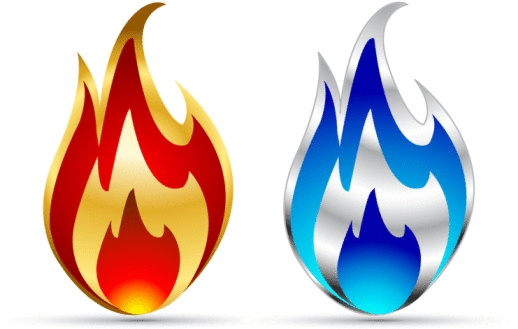Carbon monoxide safety and awareness
https://www.sa.gov.au/topics/water-energy-and-environment/electrical-gas-and-plumbing-safety-and-technical-regulation/electricity-and-gas-safety-for-consumers/gas-safety/carbon-monoxide
If gas doesn't burn properly carbon monoxide is produced. Carbon monoxide is a colourless, odourless and tasteless gas which is very poisonous. The human body doesn't recognise its presence and it can kill you before you know it is there. It is often called 'the silent killer'.
If you have a gas appliance in your home that is faulty or not properly maintained, your family could be at risk of carbon monoxide poisoning.
Carbon monoxide videos
Gas safety campaigns
In May 2010, Chase and Tyler Robinson, aged 8 and 6, died from carbon monoxide poisoning from a faulty gas heater in their home. The cause was found to be a gas heater that was producing carbon monoxide because it had not been properly serviced and maintained. Now their mother is campaigning for people to be aware of the dangers and be gas safe, to prevent further deaths and has established the Chase and Tyler Foundation.
The Office of the Technical Regulator urges people with indoor gas appliances and landlords who rent out homes with indoor gas appliances to have them serviced every two years to avoid this problem repeating.
Television news coverage
Watch Today Tonight's Gas Heater Warnings video (4 minutes).
The Silent Killer – courtesy of Energy Safe Victoria
Protecting your health and safety
A very small amount of carbon monoxide is always produced by the combustion of gas, which is safe if the appliance is used in accordance with the manufacturer's instructions and is not faulty. If a gas appliance or installation is faulty then there is a risk that very high or deadly levels of carbon monoxide may occur.
There are a number of easy ways to protect yourself and your family from carbon monoxide poisoning:
- Have gas appliances serviced at least every two years by a licensed gas fitter. Ask the gas fitter to also check the appliance installation at the same time.
- Only use the gas type that is designated for use with the appliance. For example, it is dangerous to use liquefied petroleum gas (LPG) with a natural gas appliance or vice versa.
- Only use the appliance for its intended purpose. For example, do not use a gas cooker to heat your home.
- Ensure the gas appliance has adequate ventilation to operate properly and prevent build up of any harmful products of combustion, including carbon monoxide. In most cases, the by-products produced by gas appliances are dispersed outside your home via a flue.
- Many households are designed to prevent draughts – if you have a natural draught flued gas heater, you may be at risk of drawing by-products of combustion (ie carbon monoxide) back into your home if you have a powerful exhaust fan operating anywhere in your home. This can also happen if the flue is partially or fully blocked. Find out more about safely using flued gas appliances indoors.
- Beware of carbon monoxide when using gas appliances in confined rooms without adequate ventilation eg toilets/bedrooms or caravans where the doors and windows are tightly sealed. This can be extremely dangerous.
- Always follow safe practices when operating unflued gas appliances, eg portable space heaters, portable gas refridgerators and stoves.
- Watch out for signs of incomplete combustion and possible carbon monoxide formation. Signs include:
- an acrid smell and irritation to the eyes
- soot or yellow/brown straining around or on the appliance
- pilot lights that frequently blow out.
- change in the gas flames colour - flame colour does not necessarily indicate carbon monoxide production, however if a blue flame becomes yellow, carbon monoxide production is increased.
A blue gas flame burning yellow can be
a sign of carbon monoxide production
Carbon monoxide poisoning
Symptoms
Symptoms of carbon monoxide poisoning may occur when using, or immediately after using a gas appliance, include:
- persistent tiredness and sleepiness
- shortness of breath
- mild and severe headaches
- nausea
- vomiting
- weakness
- confusion
- loss of consciousness.
Are you being affected by carbon monoxide?
If you feel alright when you are out in the fresh air but experience any of the symptoms listed above when you operate a gas appliance or heater in your home, seek immediate medical attention and tell your doctor that you suspect carbon monoxide poisoning.
To determine if there is any carbon monoxide in your blood, the doctor will need to do a blood test. If the results confirm there is carbon monoxide in your blood, stop using your gas appliances at home immediately and organise for a licensed gas fitter to check and service them.
Extreme carbon monoxide poisoning may lead to confusion, loss of consciousnesses (this can occur quickly if the level of carbon monoxide is high) and even death.
Some people are especially sensitive or susceptible to carbon monoxide poisoning including:
- people with heart disease
- people with anaemia
- young children
- pregnant women and their unborn babies
- the elderly.
Resuscitation
To treat a person who is suffering from carbon monoxide poisoning, move them to a well ventilated, gas-free area. Call emergency services on 000 and start the resuscitation procedure, being careful not to inhale exhausted air from the patient.
Exposure limits and testing
If you are concerned about carbon monoxide levels in your home, workplace or other area, contact a licensed gas fitter who should be able to test the levels for you.
The Australian Government's Department of Sustainability, Environment, Water, Population and Communities - Air toxics and indoor air quality in Australia provides health guidance on safe exposure levels of carbon monoxide including:
- an eight-hour time weighted average exposure limit in the workplace of 30 parts per million (ppm) (34 mg/m3).
Hôm nay nhà đươc thợ đến hút bụi ống ga tòan nhà. Chỉ số 3/200 Tốt (chi số an tòan 3-10)
Today 27/05 Fri.

No comments:
Post a Comment